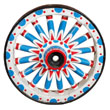This wagon is a classic example of people calling it by various names. There are no loading lists to be found of the Hagenbeck-Wallace Circus from 1923, the last inventory found, until 1937, when the Ringlings leased the Hagenbeck-Wallace Circus to the H & A Circus Operating Company. The complete inventory that was taken on April 24, 1937, simply listed this wagon as # 75 – trunks. The inventory that Gordon Potter took at the Opening stand in Marion, IN. on April 27, 1937, listed this wagon as No. 75 – Picture Panel Trunk wagon ( Red Riding Hood .)
The Arthur Bros. loading list from 1945, that is found in the March / April 1959 issue on page 10, calls this wagon # 75 – Red Riding Hood Tableau. Bill Elbrin’s coverage of the Arthur bros. Circus in the Bandwagon, Nov. / De. 1962 on page 6 referred to this wagon as a baggage wagon # 75 – Marquee and props – Ex HW. ( Hagenbeck-Wallace ) Generally referred to as a Picture Frame tableau, as you see, some people have referred to it as the Red Riding Hood Tableau. Some call it the Peter, Peter Pumpkin Eater Tableau. C. P. “Chappie” Fox called this the Hagenbeck-Wallace Fairytales Tableau in his book “Horse Drawn Wagon Collection” as seen on page 53. This is due to the fact that the paintings that adorned this wagon were different on each side. That title was also engraved into the skyboard carvings. To give you an idea of how heavy this wagon was when fully loaded, you’ll note the wheels have 18 spokes, more than the normal 16 spoke wheels on most all other wagons.
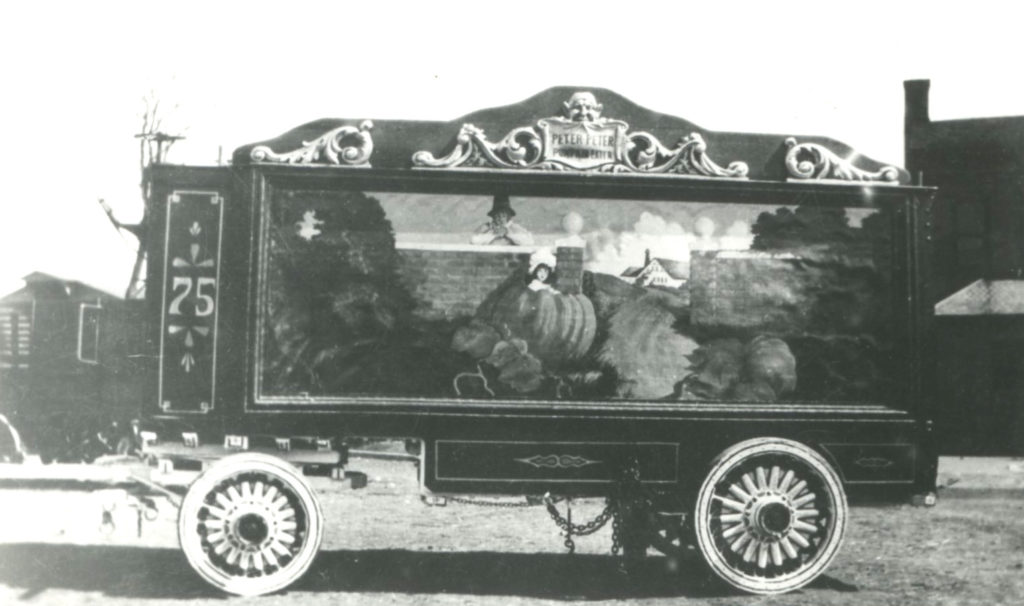
( 1934 – Conover set # 807, photo # 413 )
The earliest time of this wagon’s existence is not completely know. We do know it was not in the complete 1922 inventory and it was not in the 1923 parade order or loading lists. There is no mention of this wagon or many others in Chang Reynold’s coverage of the 1924 Hagenbeck-Wallace Circus in the Sept./Oct. issue of the Bandwagon in 1966. Very few photos exist of this wagon before 1934. Numbered 75 and painted what we believe to be a red body, the paintings were done by famed clown, Emmett Kelly, in the Peru winter quarters along with another tableau built almost alike with the Mickey Mouse village painting. William “Cap” Curtis was leading the way in the wagon shops and the basic design of many of his wagons was large and stout. This particular wagon had the drop frame floor to access more storage space inside the wagon. One of the most identifiable features of this wagon was the large skyboard with the gilded carvings. This wagon went out on the newly re-titled Hagenbeck-Wallace and Forepaugh Sells Bros. Circus in 1935 also. Also of note was the front vent allowing air into the wagon while traveling.
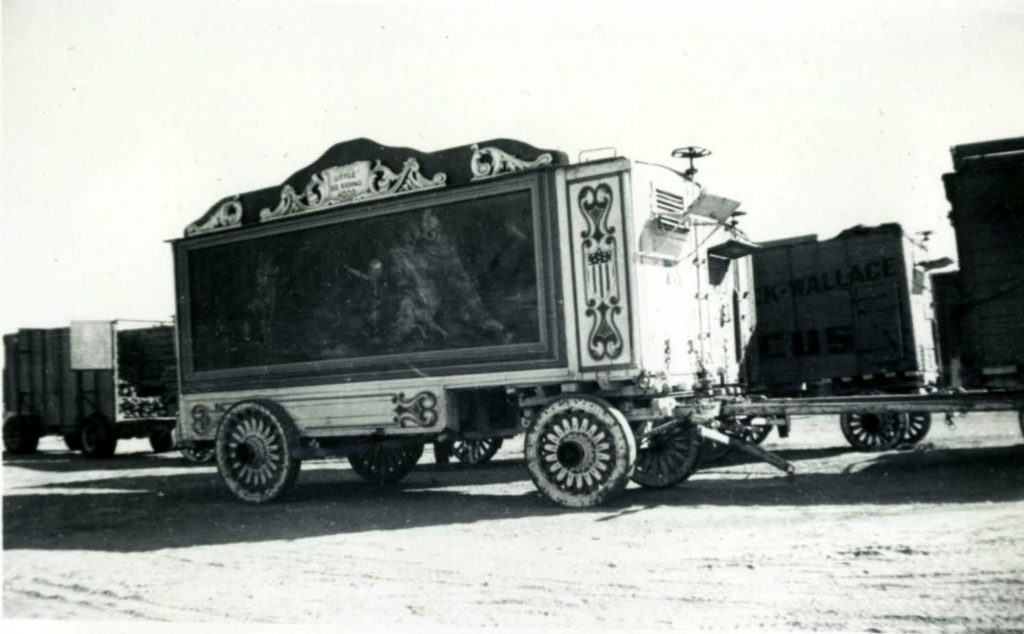 ( Oct. 22, 1938 at Baldwin Park WQ – Hugh McGill photo )
( Oct. 22, 1938 at Baldwin Park WQ – Hugh McGill photo )
In 1936, no show left Peru, so this wagon remained in the Peru winter quarters. In 1937 and 1938, the Ringling interests, leased the Hagenbeck-Wallace title and equipment. Now re-painted as a white body, this wagon went out on both tours. Unfortunately, 1938 was the worst year for circuses in this country and this show closed in California and was sent to the Al G. Barnes winter quarters in Baldwin Park. With a dispersal of equipment and holdings, Louis Goebel, who owned Jungleland, ended up with much of the circus equipment as he rented items to the movie studios as props.
Louis Goebel leased a lot of the circus equipment to Martin E. Arthur for his 1945 version of Arthur Bros. Circus on rails. This wagon was on that show in 1945. It then returned to the Goebel holdings and was used in various films over the next 15 years. The Corey and Murray title was used in the film “Caged Fury,” put out in 1948 by Paramount Studios.
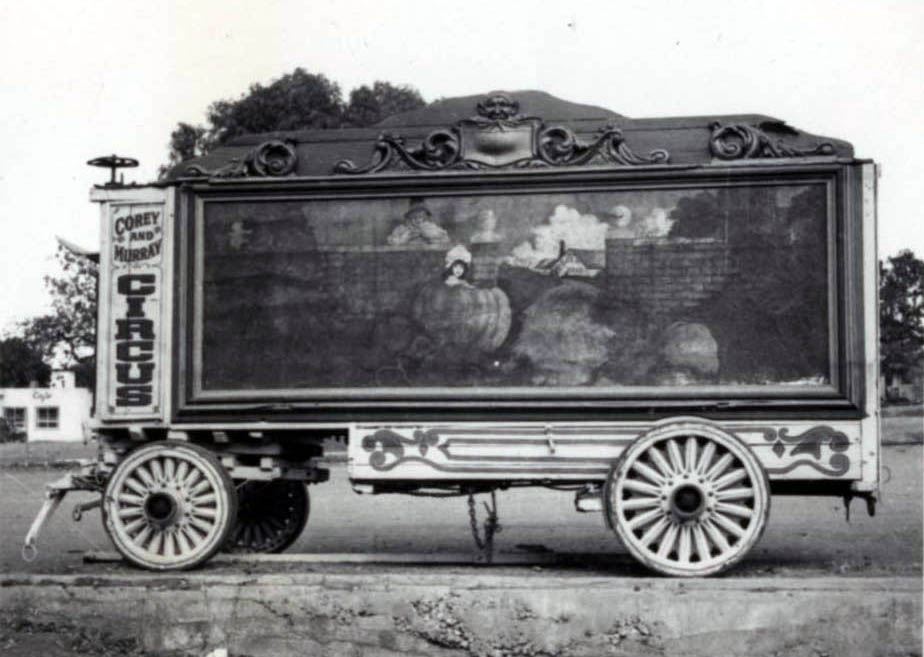 ( 1951 – ex HW wagon at World Jungle Compound – Bob Bernard photo )
( 1951 – ex HW wagon at World Jungle Compound – Bob Bernard photo )
The careful observer will note that the paintings haven’t really changed any at all but the lettering in the skyboard has been removed. The paintings would later be removed for other film work such as the T n T Circus title which appeared in the television series “Frontier Circus.”
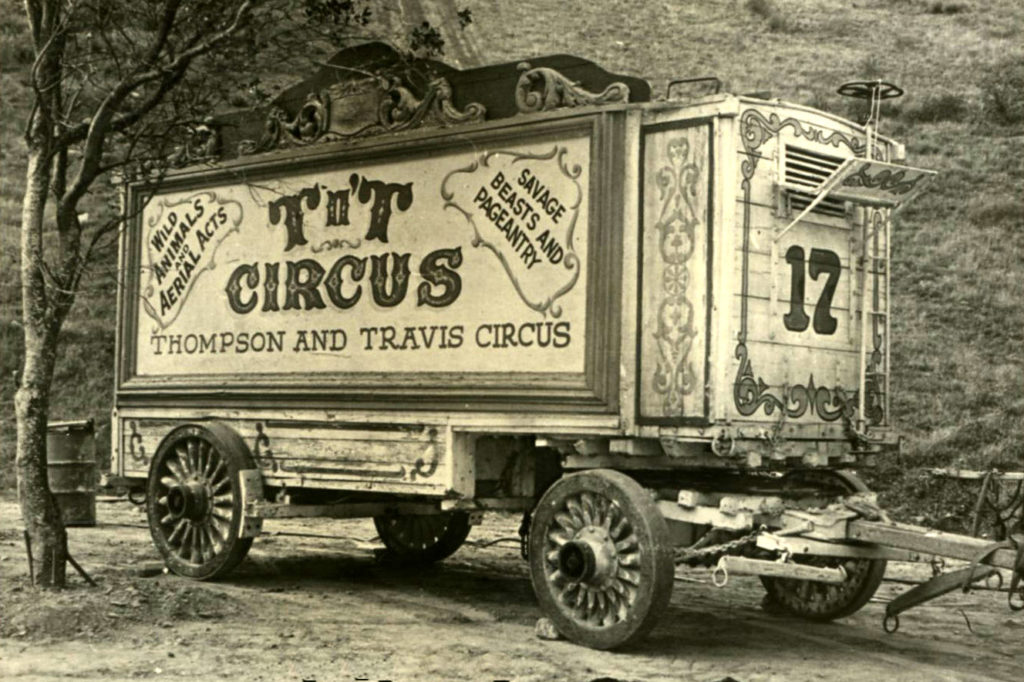 ( 1964 – Presented to Circus World Museum by Universal Studios )
( 1964 – Presented to Circus World Museum by Universal Studios )
Universal Studios owned the wagon in the 1960s. They donated it to the Circus World Museum in 1963. When the staff at the Circus World Museum received this wagon in their wagon shop, the restoration began with new lumber to make the wagon sound again. Under the direction of Marv Gauger, the wagon was restored and a new paint scheme was put in place.
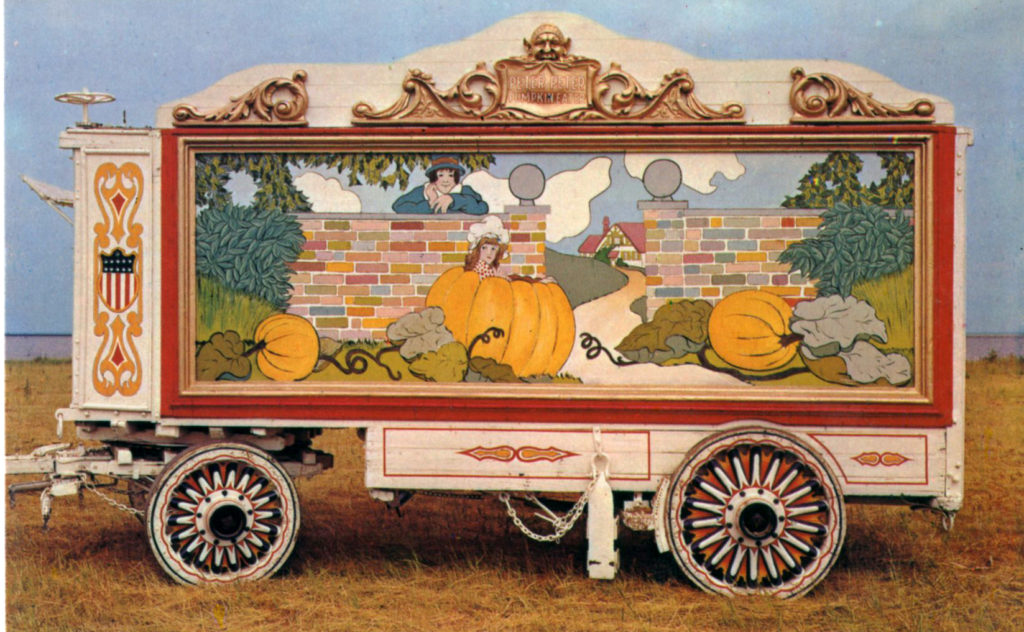 ( Lyman Cox Postcard – photo provided by Circus World Museum )
( Lyman Cox Postcard – photo provided by Circus World Museum )
The front scrollwork represented the 1938 look. The bottom drop frame decorations didn’t match anything and the white skyboard was from a very different time as the 1938 scrollwork. The lettering was added back on the scrollwork on the skyboard. In the early 1980’s, the wagon was re-painted red, once again. The 1938 scrollwork was added to the front corner and the small graphics were added to the bottom, to match the wagon in 1934 when it was painted red.
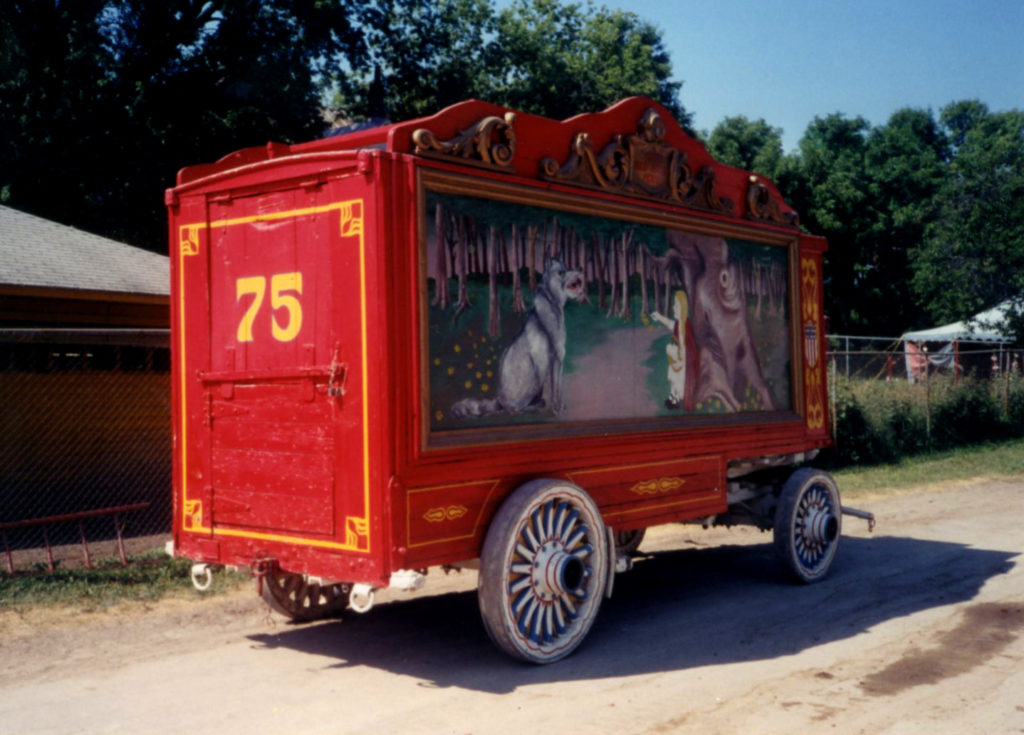 ( 2003 – Bob Cline photo )
( 2003 – Bob Cline photo )
The Wagon is 20′ long and 11’8″tall.
The wagon is currently housed on the grounds at Circus World in Baraboo, Wisconsin
If you have any questions or have more photographic evidence, feel free to contact us at circuswagons@gmail.com
